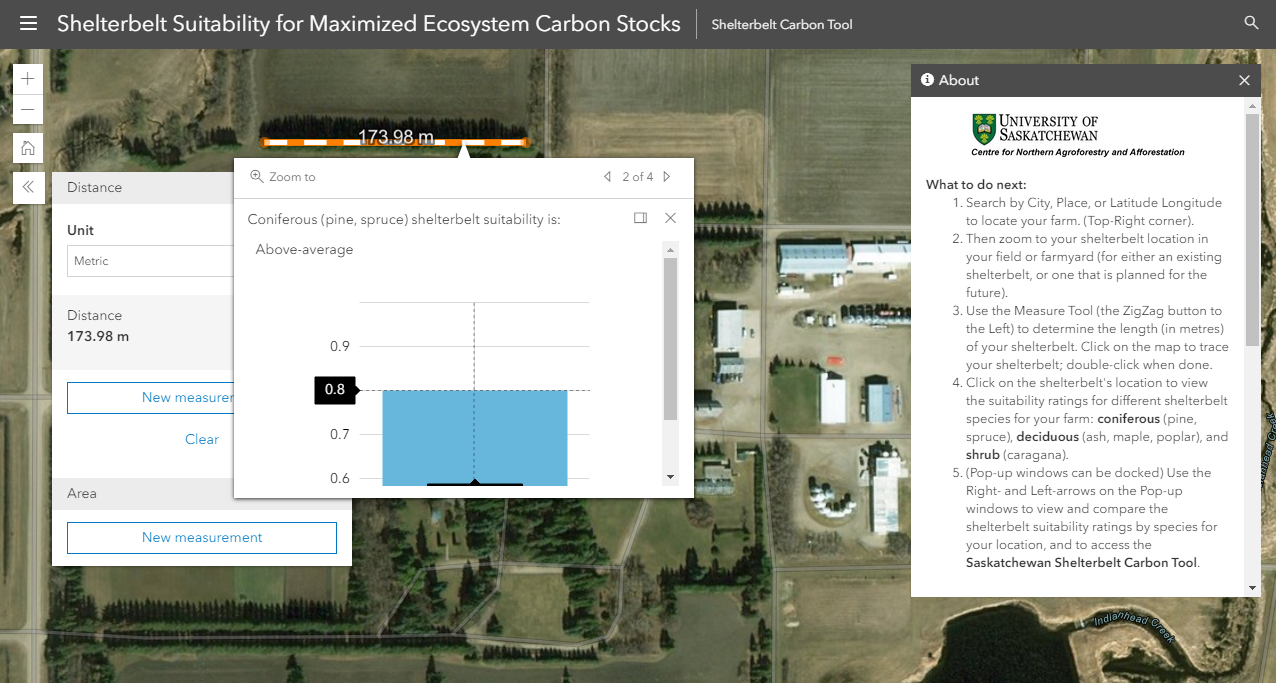Here is how: We compiled extensive shelterbelt data in the past 10 years of research to build an online shelterbelt carbon management support tool for maximized ecosystem carbon sequestration:
Saskatchewan Shelterbelt Carbon Tool
(Belt-CaT)
(Click on the image below to access the Belt-CaT tool)
The Saskatchewan Shelterbelt Carbon Tool (Belt-CaT) is designed to estimate carbon stocks for existing shelterbelts, as well as to project carbon stocks for future shelterbelts. The carbon stocks are estimated for four carbon pools - TEC (total), AbG (above-ground biomass), BwG (below-ground biomass), and DOM (dead organic matter: e.g., soil carbon), as shown in the Table and Chart outputs of the Belt-CaT tool.
The Belt-CaT tool also allows you to estimate the total CO2-equivalent within the shelterbelt and the monetary value (based on current or projected market price; the default is $15 CAD$ per tonne of CO2-eq. ) of the total carbon stocks for the shelterbelt, at any four points in time (you can enter any past or future shelterbelt age, 1-60 years).
The tool is designed to provide accurate estimates for six common shelterbelt species:
The Belt-CaT tool also allows you to estimate the total CO2-equivalent within the shelterbelt and the monetary value (based on current or projected market price; the default is $15 CAD$ per tonne of CO2-eq. ) of the total carbon stocks for the shelterbelt, at any four points in time (you can enter any past or future shelterbelt age, 1-60 years).
The tool is designed to provide accurate estimates for six common shelterbelt species:
- caragana (CG)
- green ash (GA)
- hybrid poplar (HP)
- Manitoba maple (MM)
- Scots pine (SP)
- white spruce(WS)
- And it can also be used for any other deciduous (average for GA and MM) or coniferous (average for SP and WS) species
- Provided below is an example of the Belt-CaT tool, which you can use to practice estimating shelterbelt carbon stocks, without going through the steps of mapping the exact shelterbelt location.
- To produce reliable and accurate carbon estimations for your shelterbelt, please use the web application for the Belt-CaT tool by clicking on the above image, or by clicking here.



